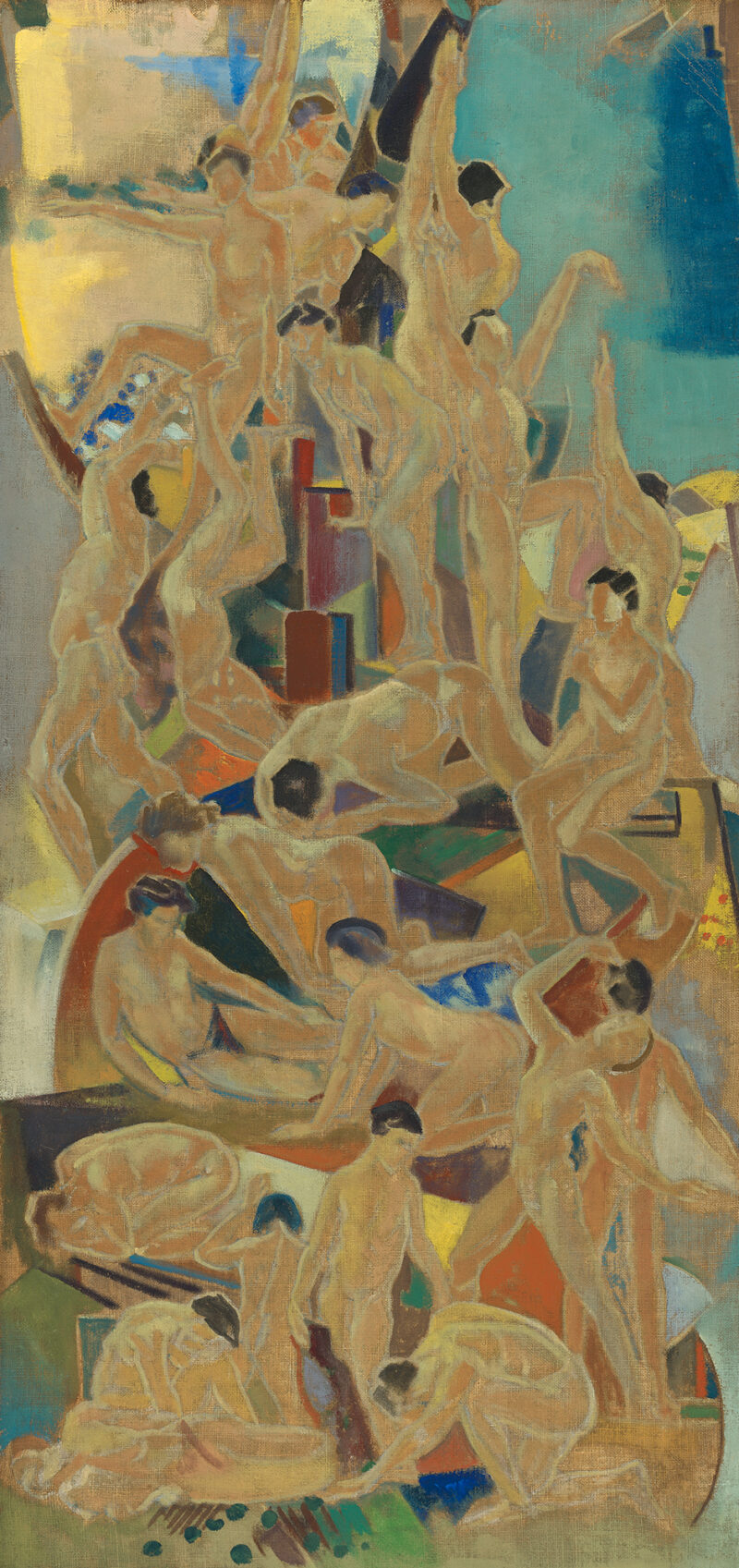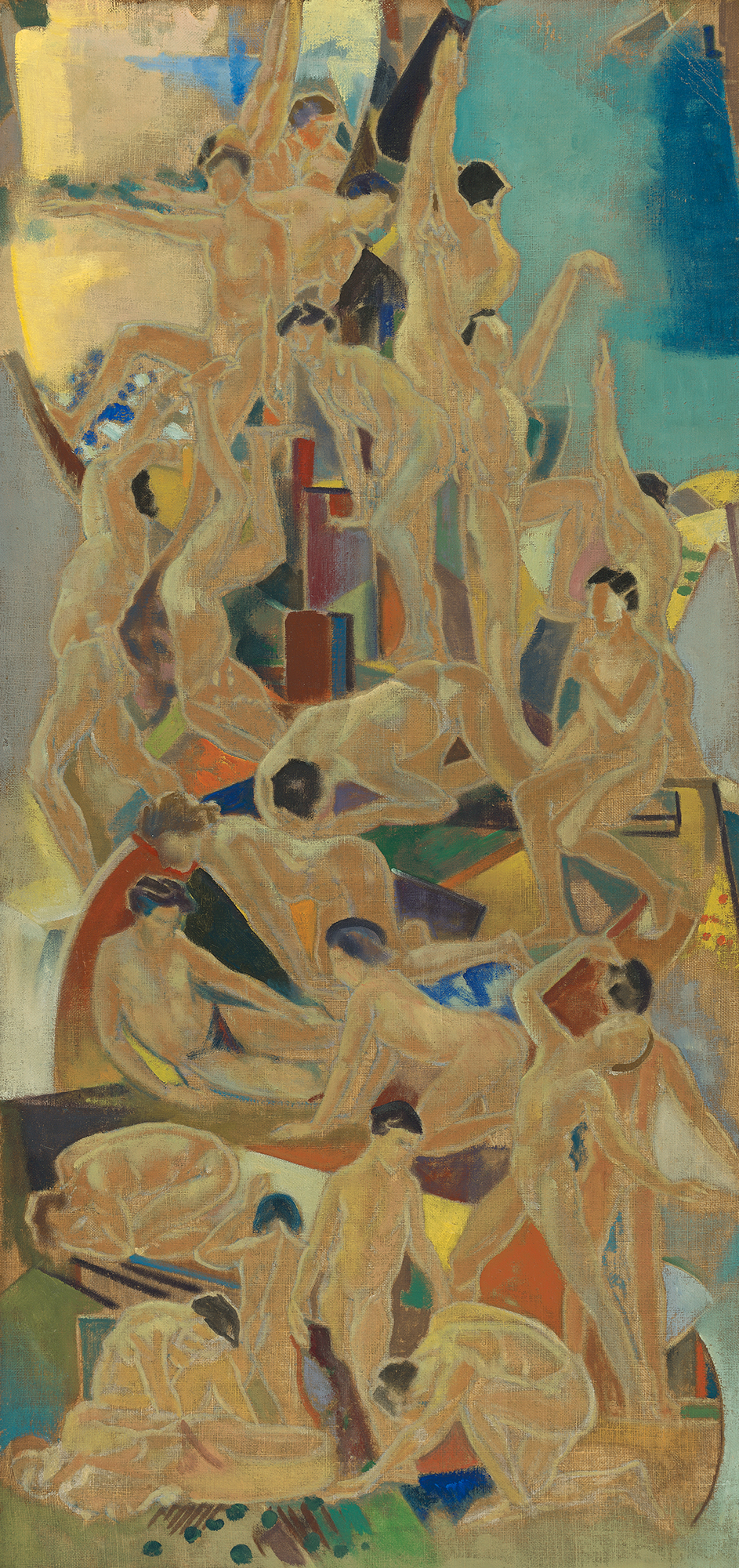
Energia
Davies, Arthur Bowen
about 1913
Artwork Information
-
Title:
Energia
-
Artist:
Davies, Arthur Bowen
-
Artist Bio:
American, 1862–1928
-
Date:
about 1913
-
Medium:
Oil on canvas
-
Dimensions:
43 x 20 1/2 inches
-
Credit Line:
Wichita Art Museum, Gift of Mr. and Mrs. Samuel P. Wallingford and Wichita Art Museum Members Foundation
-
Object Number:
1970.5
-
Display:
Not Currently on Display
About the Artwork
Arthur B. Davies earned his esteemed status in the history of American as much for his promotion of modernism and of the professional independence of contemporary artists in the United States as for the aesthetic of his own work, which was progressive but did not break new ground. Although Davies practiced a decorative, symbolist mode of painting featuring ethereal female nudes floating along side woodland pools, he admired individualism of any stripe. He assisted in the arrangements for and participated in realist Robert Henri’s radical anti-academic group exhibition called The Eight in New York in 1908. Davies subsequently directed the organization of the landmark 1913 Armory Show, New York that gave the majority of American artists and the American public their first exposure to post-impressionism, abstraction and other avant-garde European styles. Recent publications have significantly expanded our knowledge of Davies as a herald of a bold age of artistic experimentation and as a character in the roster of bohemians.
When Energia was originally acquired in 1970 by the Wichita Art Museum the painting was appreciated chiefly as an attractive but isolated example of Davies’ foray into cubism. Since that time scholarship about American art has dramatically expanded, one of the results being much richer insight into the creative thought of Arthur B. Davies, and, in particular, to the conception of Energia and its related canvases. It is now known that Energia was the left section of a triptych that was intended to function as a kind of spiritualist altarpiece, the center and larger panel being titled The Great Mother (Corcoran Gallery of Art Washington, D.C.), and the right panel, complimenting Energia being titled Potentia, (Indiana University Museum Art Museum, Bloomington, Indiana).
The particular history and rich philosophical allusions set forth in The Great Mother triptych, and its subordinate two panels, including Energia, has been thoroughly and delightfully documented by historian Christine I. Oaklander in her 2004 essay, “Arthur B. Davies, William Fraetas, and Color Law.”[1] Davies first exhibited the triptych in 1913 in an exhibition that he organized for the Montross Gallery, New York, to follow upon the success of the Armory Show with exclusively American examples of modernism. Davies’s most significant entry, the triptych, exhibited his digest of the spiritualist color theories and earth-energy-fecundity myths developed by an obscure South African man, William Frank Fraetas, who had fleeting contact with a few members of the American avant-garde in the 1910s. Inspired by Fraetas’s concepts, the bright clear colors of Energia and its robust angular male nudes visualize an extrovert counterclockwise movement of generative energy while Potentia’s soft muted tones and rounded languorous female nudes symbolized the interior counterclockwise flow of life energy, the two compliments, like yin and yang, uniting in The Great Mother or the universal unity of being and birthing. The most telling insight of all may be Oaklander’s suggestion that Byzantine mosaics and medieval enamels inspired the decorative divisions of the figures, golden network of lines, and jewel-like fill colors of Energia’s composition.
[1] Christine I. Oaklander, “Arthur B. Davies, William Fraetas, and Color Law,” American Art (Smithsonian American Art Museum: Washington D.C., summer 2004), pp. 10-31.
